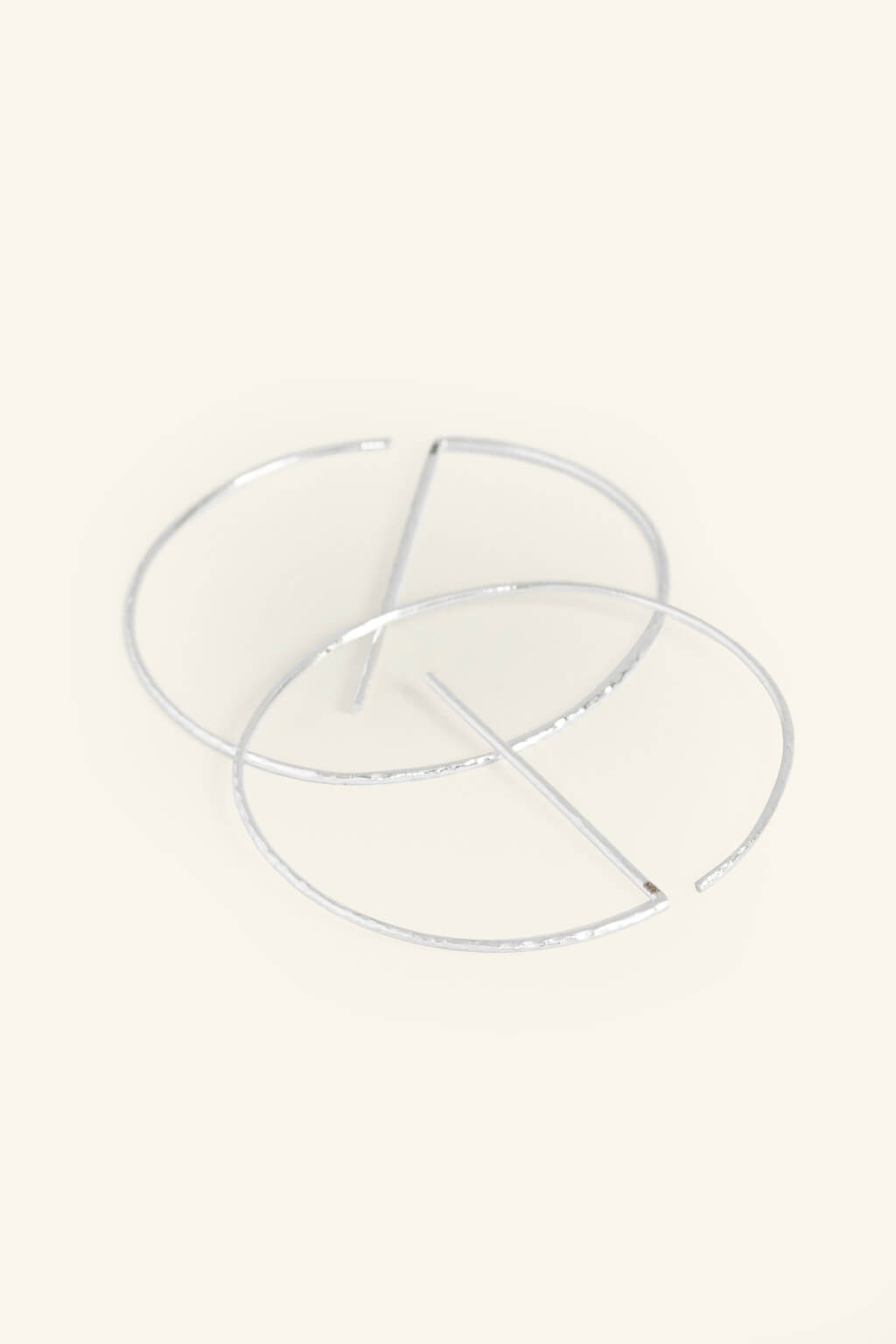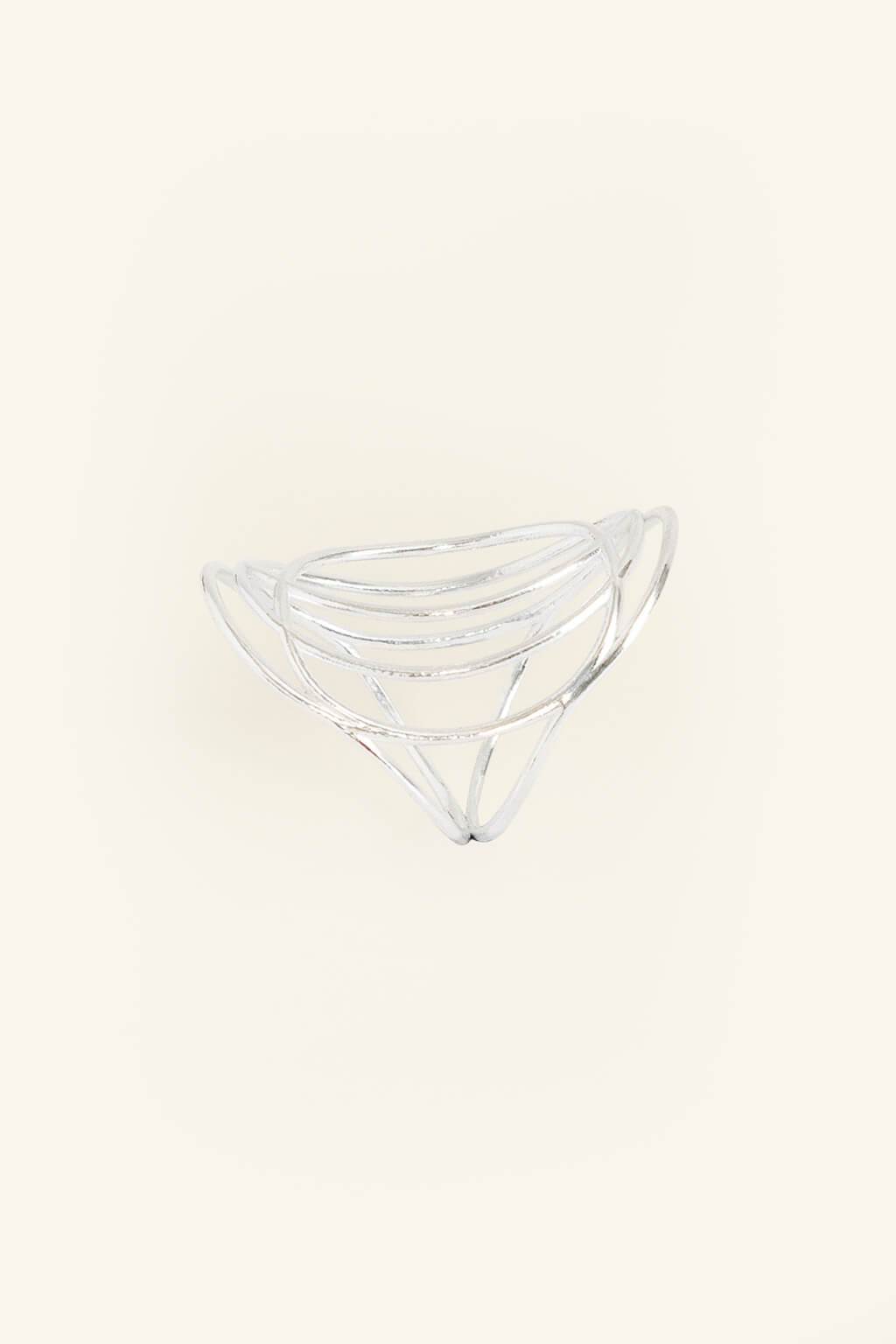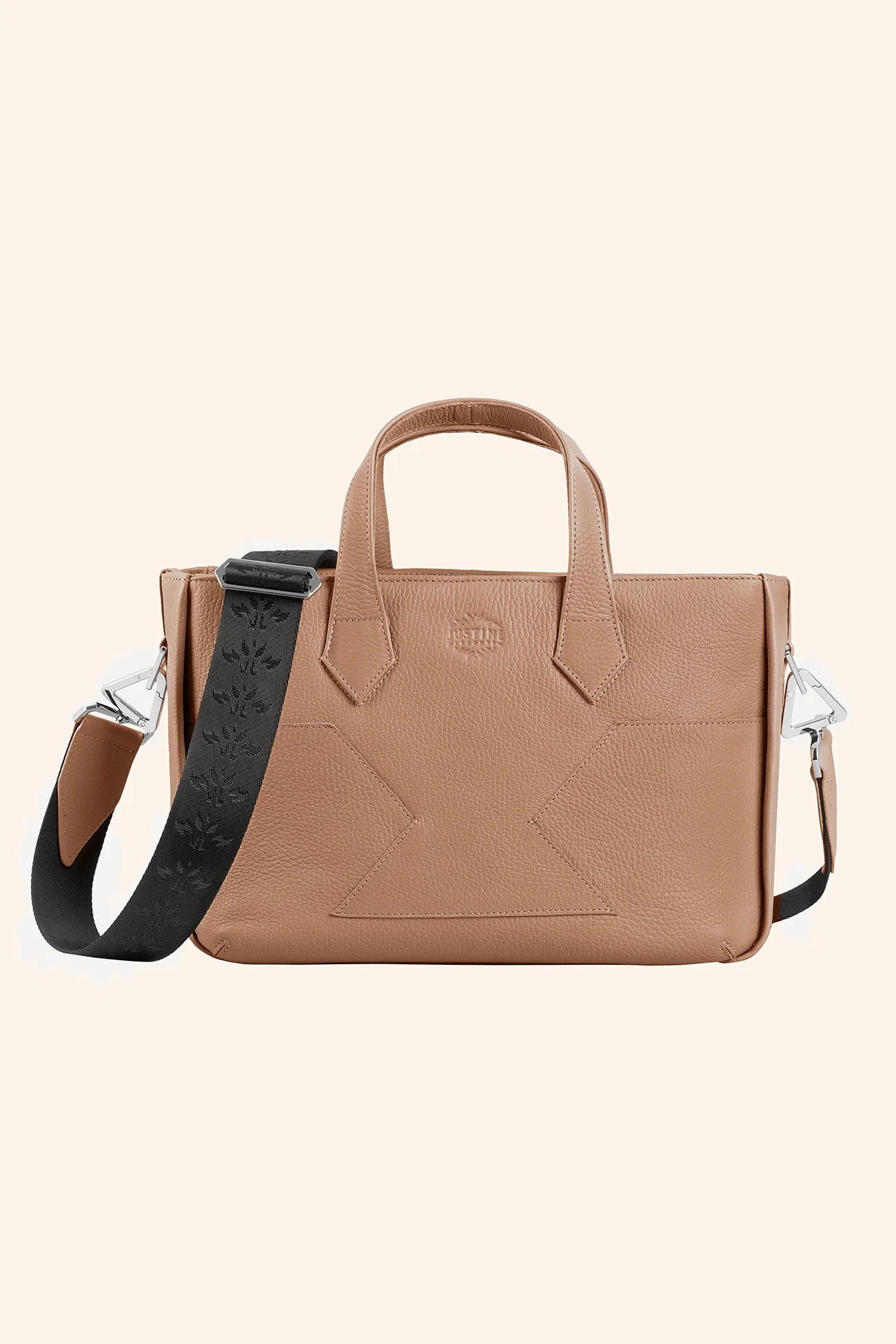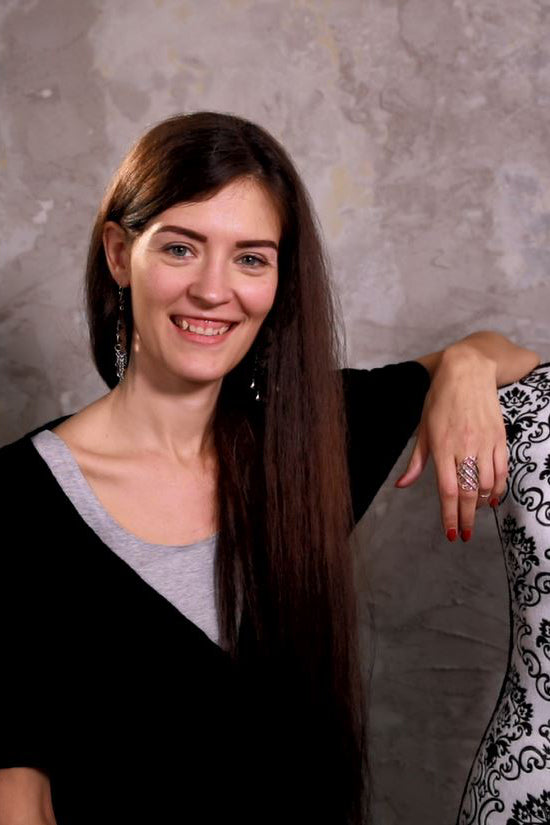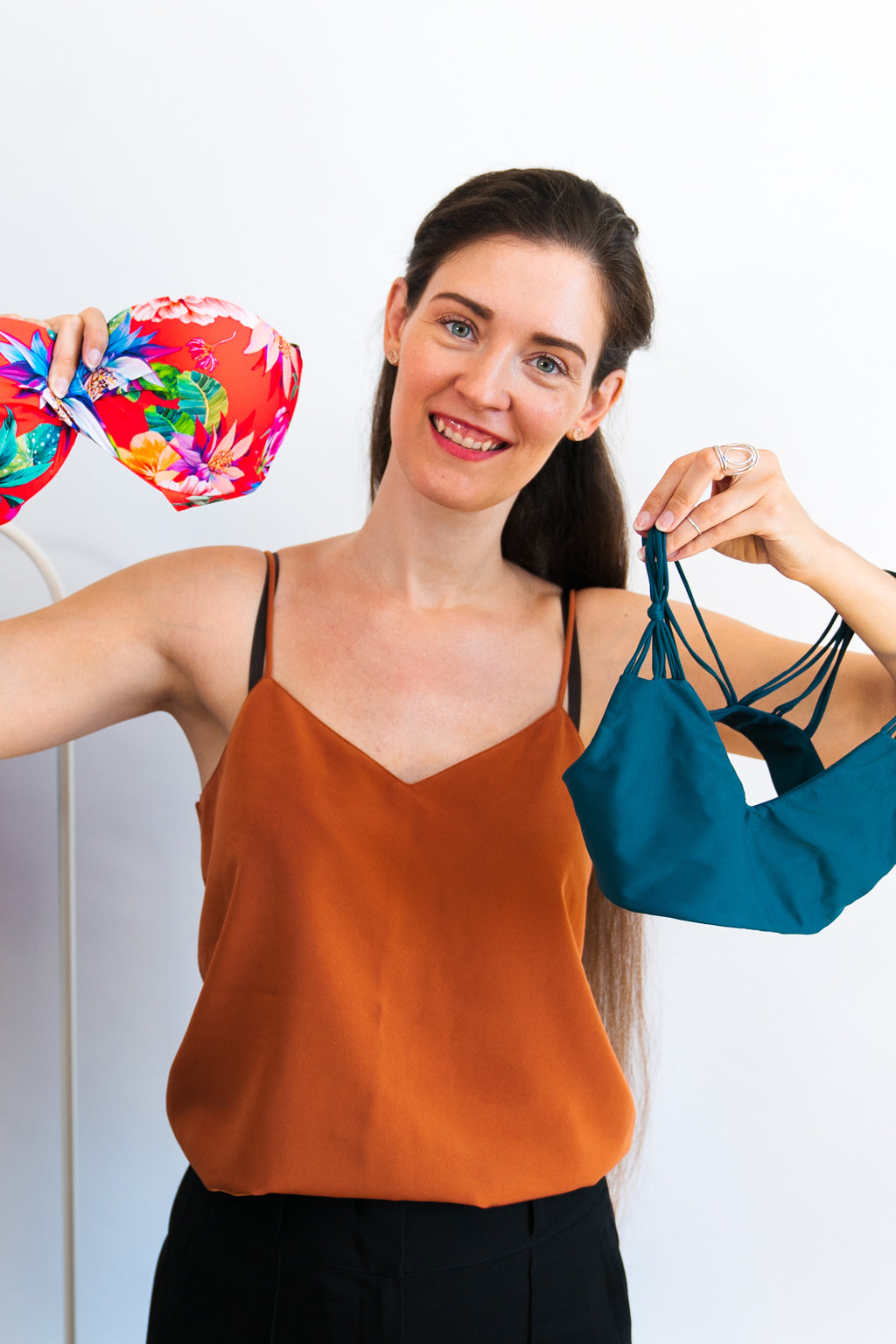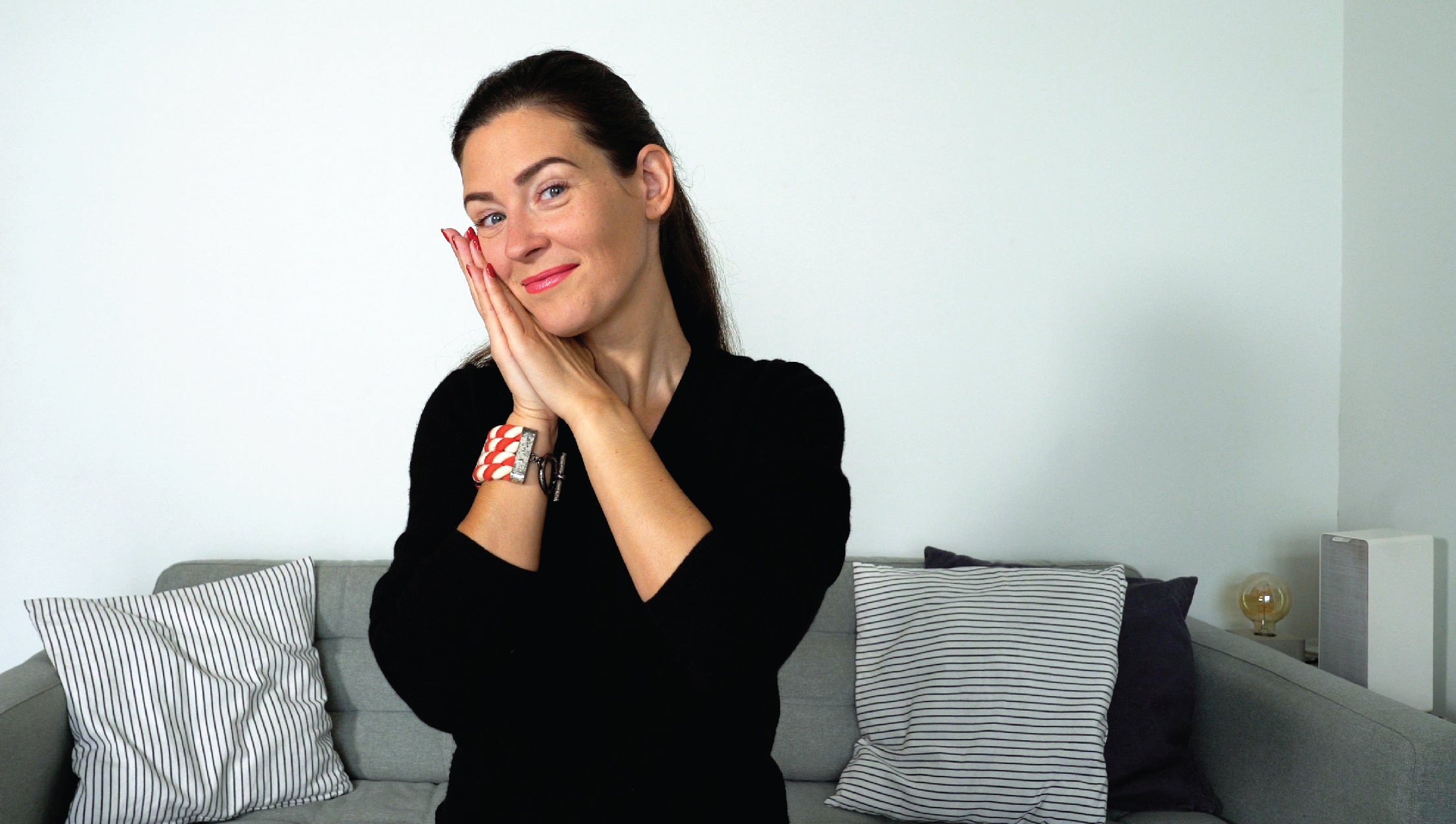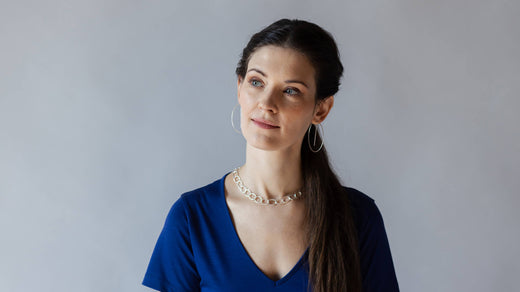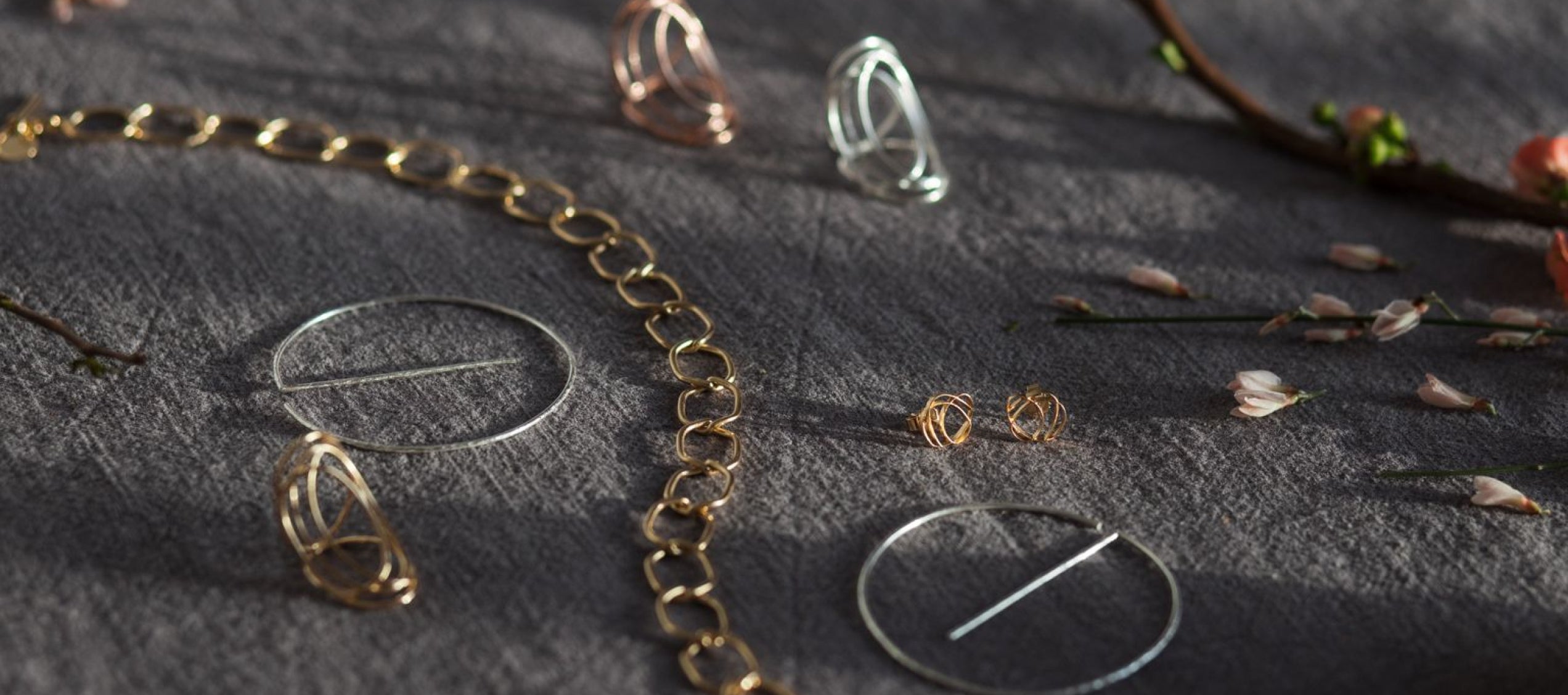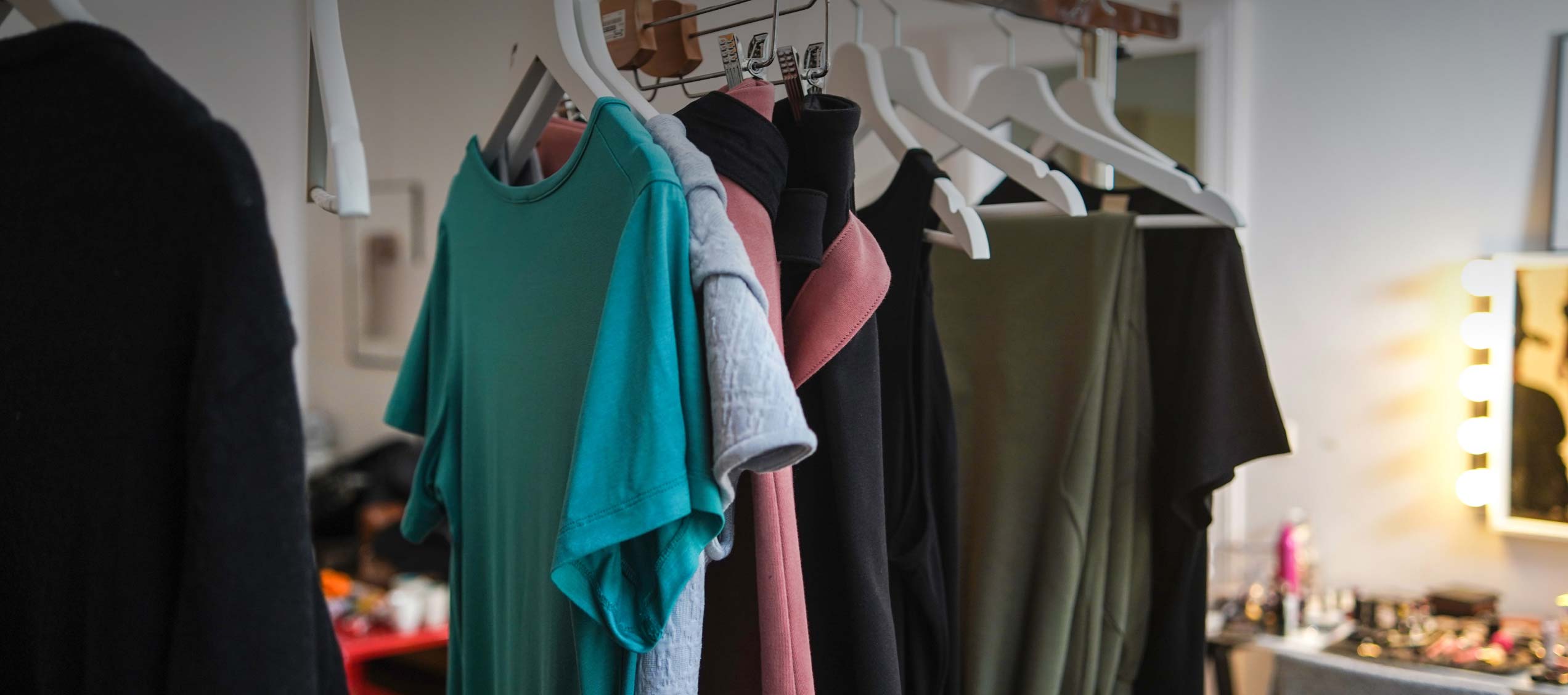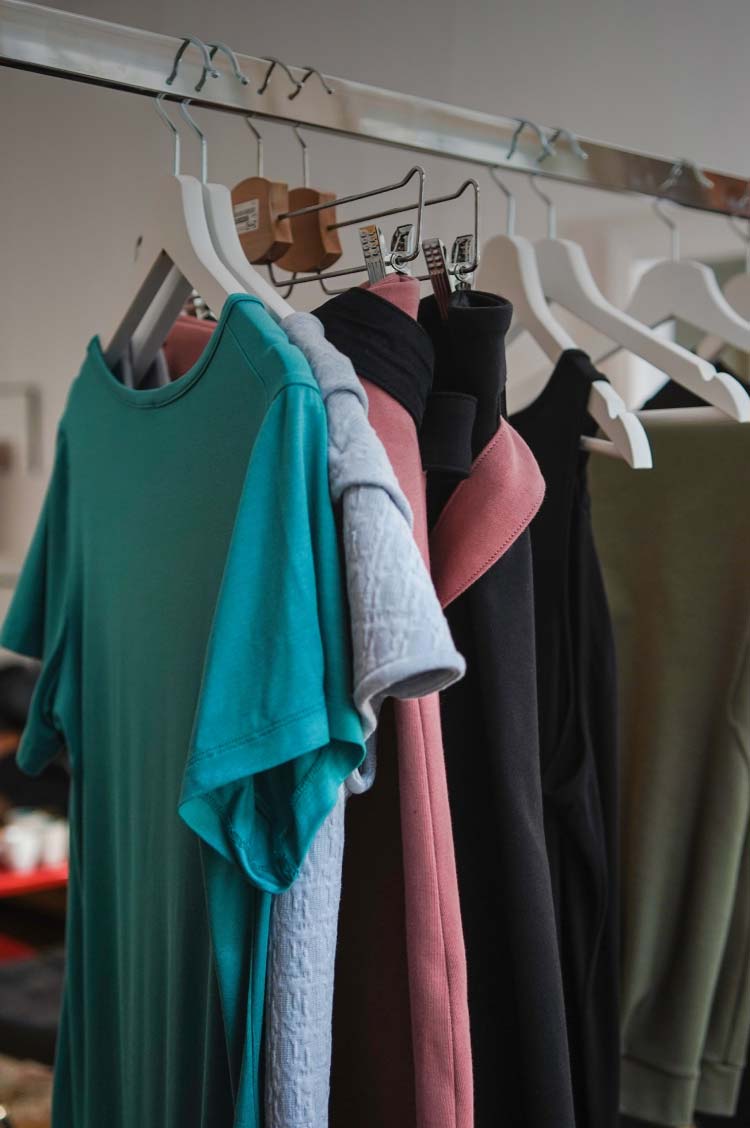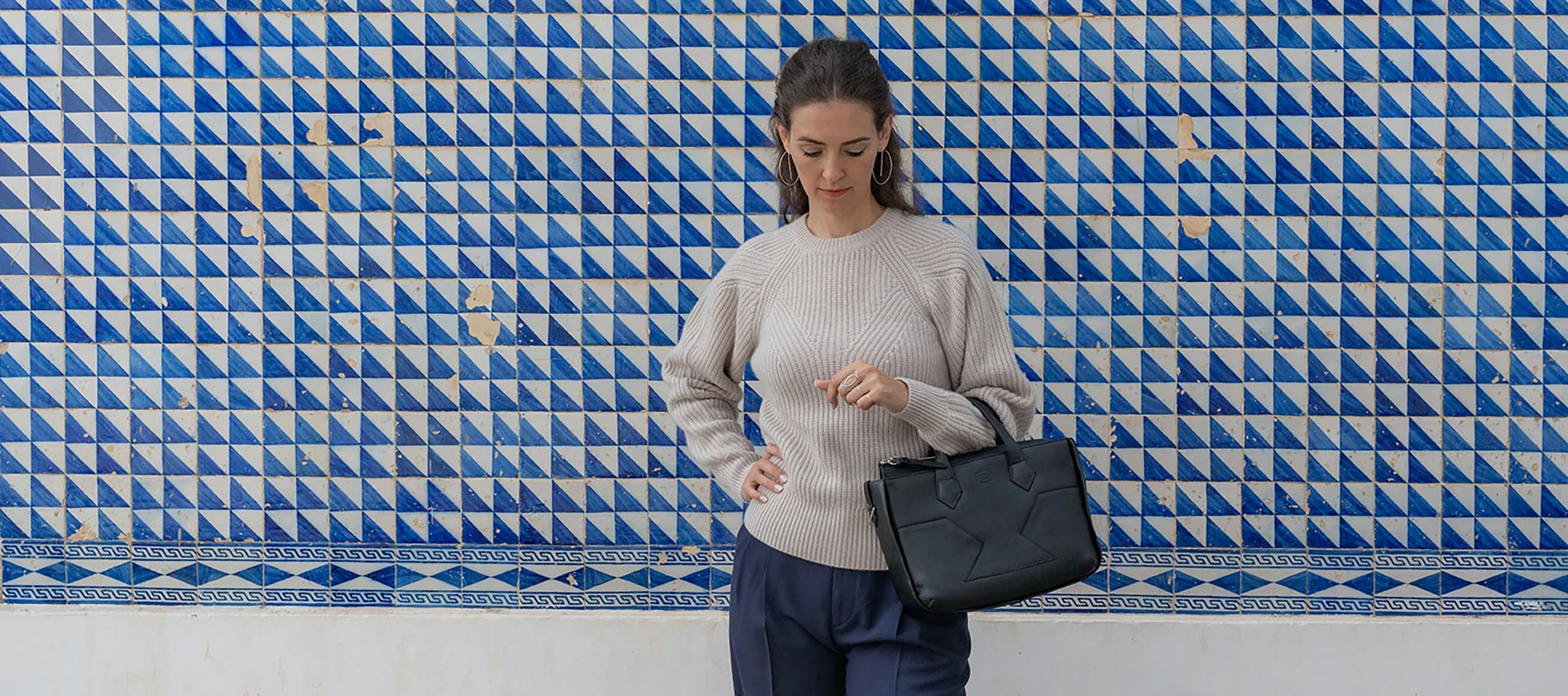How to recognize good & bad quality when you’re shopping for clothes? There are some elements that are easy to check before you purchase a garment and you don’t have to be a fashion designer to be able to spot the signs of poor quality.
1. Good fit / good cut
There are two signs of poor quality that you should run away from:
Poor fit
This colorful sweater lacks space for the breast. It’s a boxy cut and not body tight, okay, but I’m still missing breathing space at the bust level. Can you see the fabric "pulling" (horizontally) between the chest and the armhole? The fabric is woven, not knitted, so it’s not stretching at all as I move. This garment would be good if it was either even boxier or if it had bust darts, to fit the shape of the chest, like for women shirts.
Poor cut
When manufacturers don’t care in which direction they cut the fabric, you get side seems that twist. Everyone notices it, it’s very annoying and there is nothing you can do against it. When you take a roll of fabric, it has a direction, vertically. All your pattern pieces must be aligned vertically with the fabric, as per the sketch below.
Typically, fast fashion brands will say “oh, look, there’s still space to cut one sleeve here (diagonally compared to the direction of the fabric roll, not aligned to the 2 bodice parts)! It’s not aligned with the fabric, but, who cares?”. So they optimize their fabric consumption and squeeze more pattern pieces onto the fabric yardage. But in the end, you have pieces cut in all fabric directions. That’s why some garments in stores have twisted side seams, before you even washed them once...
(Note: if your washing machine has a spin function, be careful of not spinning too fast or else garments that weren't originally twisted might get twisted after a few washes.)
2. Colors/dying
You want a colorful, vibrant piece to remain vibrant for as long as possible. But when you buy a piece too cheap, you will see the colors fade out very quickly with washes. VERY quickly.
Look at these two spaghetti tops. The pink one now looks like a white top that has been washed with a pink dress which lost its color.
And you can't see it well on this photo, but the black one isn't really black anymore: it's now anthracite grey...
Remember the colorful sweater? The care instructions say “Not washable”, so they probably tested it and found out that the blue or the pink bleeds onto the cream color when you wash it. So they said “let’s just say don’t wash it – at all!” But how is that supposed to work for me as a consumer?...
3. Prints / appliqués / jacquards
This top once came in a vibrant, acid green print and the black parts were rubberized. It looked really special. Now, the rubber effect is almost gone, the t-shirt just feels stiff on the black areas, and the green is low quality so it has faded out as well. It turning yellow-ish.
So if I am standing in a shop and I have the choice between two t-shirts, same price, one is a solid and plain color, the other one has a print on top... I would always go for the solid color. Why? An appliqué or a print costs extra money. Keeping the retail price equal, you can be sure that on the printed version they cut cost somewhere else to compensate for the margin loss, and you’ll end up with thinner fabric or with twisted seams.
Why are jacquards more expensive than prints? This is because the motive in the jacquard is knitted into the fabric, the yarns themselves are of different colors. For a print, you take a knitted fabric and you just apply a layer of colors on top of it. It is, by definition, less durable than a jacquard. You can recognize the difference if you look inside the garment: a printed fabric looks plain on the back side, while the jacquard (usually) has the "mirror" pattern of the front side.
4. Fabrics/ fibers
If the fabric is too loosely knitted or woven together, you can notice that with your finger. Take the fabric and try to push back and forth the little loops or weaving. If you can do that with your finger, not good. It’s too loose. A tight knit will be more dense, it will be heavier, it will fall nicely. For a jersey t-shirt, good-quality knitting typically looks very tight, very dense.
When you buy clothes online and you can’t touch and feel the fabric, look at the way the fabric falls on the model on the picture, and then you’ll know.
Now, fibers. There are natural fibers and synthetic ones. Among natural fibers, the classic four are: silk, cotton, linen (from flax) and wool.
Then come modal, viscose or lyocell (e.g. Tencel). They are also of natural origin but they have "better" characteristics: they are more breathable, they release sweat better & dry faster (i.e. wicking properties), they don’t shrink as much as cotton if you wash them.
On the side of synthetic fabrics, stay away from acetate, it’s made of petrol, it’s as breathable as plastic, super sweaty! Then you have polyester, acrylic, rayon (...) that have good properties if you chose a high quality. There are a few other ones that are chemically made. Overall, synthetic fibers are much more stable than natural fibers, they shrink less, they last longer.
A garment that is entirely made in synthetic fibers is not always the nicest feeling on the skin, especially at a low price point. But the problem is that 100% cotton is no longer a guarantee for high quality anymore either, because the cotton production worldwide has been so fast fashion optimized that now you can find really cheap quality cotton, and if you have a t-shirt in that fabric, it’s going to shrink by one size the first time that you wash it, it will lose its color and its shape fast - and it costs a lot of water during production.
So sometimes, nowadays, a mix of natural and synthetic fibers is not a bad choice at all. In fact, I like to work with mixes, especially for thicker fabrics. You will see fabric mixes in my collections – because they combine the stability of the synthetic-evolved fibers and the nice feeling of the natural ones.
5. Sewing quality / stitching / threads
Now, let’s look into garments for real. First, the hem.
Here on this piece, the sewing machine wasn’t even set up correctly. The thread is not lying flat on the fabric. You see how bulky and 3D it is? That’s not good.
A good hem looks like this. That’s correct thread tension: it’s lying flat. On the inside, the stitching also looks clean and tidy.
Even better: you can cover the seam at the hem with an extra band of fabric. On this example, the edge of the t-shirt is "sandwiched" in between, so it is hidden and the result looks very clean.
Or, what I did in my first clothing collection is that I covered the side seams completely with an organza band. It will stay in place forever and the side seam won’t itch your skin.
Now let's look inside.
On this bordeaux skirt, they opened the side seams. That’s great because it’s a thick, stiff, woven fabric (coated denim) so this way it’s not too bulky, it keeps everything flat, it’s easy to iron, that’s good. But, on the pockets, they didn’t do a good job, it’s messy, really.
On high quality pants, the pocket seams are hidden all around (here with a brown organza). You don’t see a seam anymore.
On this skirt here, there is something fancy. They made the hem stitch line invisible. But on the inside, unfortunately, they left the edge completely visible instead of folding it inwards a second time. So they basically spared 1-2 centimeter of fabric – that’s cheap!
Then they attached the hem with a 5mm stitching that's invisible on the outside, but it’s not tight enough. 5mm is actually just a temporary stitching. It's called a basting stitch and should normally be replaced by tighter stitching before the garment is finished.
So, what happens when you move in the skirt? The hem comes undone. Since we were talking about fabric, the outside here is wool, polyester, 5% “others”. What the hell is “others”? And the inside lining, which touches your skin in the end, is 100% polyester. Not so good.
This black skirt has a full lining, the tucks of the outside fabric are also on the inside lining fabric, so you can actually move in this garment – that’s excellent. You also have a bit of extra fabric at the hem – extra lining fabric – that’s for comfort and it’s also good for movement.
Compared to the previous skirt, here you can see under the lining. Great. The outside fiber is polyester – that’s cheap, but the inside, next to your skin, is viscose. That’s actually better than the other way around because at least you have a nice fabric touching your skin. This skirt is an exemple of good sewing.
Now, next time that you go shopping, you know what to look at & what to look for. If you see those signs of poor quality, then those garments are definitely not worth your money – they are not going to last very long...
If you want this kind of content sent straight to you inbox, you can subscribe to my newsletter:

